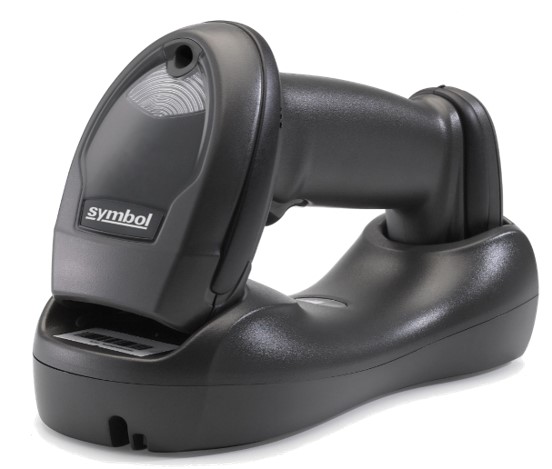Standard vs Long Range Barcode Reader
SageData is based in Ottawa, Ontario, Canada
The Short Answer
Use standard range readers. Long range readers come with inherent disadvantages. Unless your particular application demands long range readers (and upon close examination, few do) using standard equipment (and riding with the herd) is the most logical approach.
What are long range readers?
Long range in this case can mean thirty of forty feet, or ten to fifteen metres, if you
prefer
metric. Long range readers can easily read a barcode at that range. A typical use would be to
read
location
labels that are situated on a top shelf, or, where shelves are not used, to read location labels
suspended
from a warehouse ceiling. Because the reader needs to be able to see
labels that take up
a
certain
angle
in the field or view, labels designed to be read at a distance are usually much larger than
labels
designed
to be read at a normal range.
So why do people ask for long range readers?
If you ask the simple question, would you rather have a reader with a range of two
feet,
or
twenty feet
, then twenty feet is the right answer, but this question only asks for the
benefits of a
long
range reader, it does not address the drawbacks. The question that you should ask should perhaps
include
the
following...

Do you want to pay twice as much for your barcode reader?
Not all long range readers cost twice as much as the standard reader, but this is a good rule of thumb to apply. The reason is twofold. First, there are extra components in a long range reader, which increase the cost of parts, cost to assemble, and therefore cost to manufacture. And the manufacturing volume for long range readers is low compared to standard range. We don't have hard numbers, but would guess that there are probably a hundred standard scanners sold for every long range scanner.
Do you want to sacrifice close in
read capability?
Like any other optical system, a bar code reader has a depth of focus. By extending this to far objects, the close in focus capability is degraded. So reading a label at twenty feet may be possible, but reading at three inches may be compromised.
Do you want to slow down the reading process?
Fractions of a second count when there is a lot of work to be done, and if your long
range
scanner has an autofocus feature, there is often some perceptible delay in reading a label. You
lose
the
instant snick, snick, snick
offered by the standard reader.
Do you really want to use oversize labels?
Barcode labels designed to be read at long range are often oversized and made of more exotic material, including highly reflective backgrounds. This is fine if you only want to read a finite number of permanent location labels, but is less good if you want to print multiple labels and apply them. And given that some long range labels, may be two or three feet wide (up to a metre wide), they are not practical for attachment to many of the items routinely being processed.
Do you want to know which label you are reading?
One of the problems with long range reading is that the field of view is wide. If you are reading a label which is two inches wide at six inches, then that same field of view will be over six feet (two metres) wide at twenty feet. So even with autofocus and smaller labels, there is still the possibility of reading any other label that is within the area covered by the reader. If you are reading location tags which are fixed far enough apart, no problem. If you are reading items that may be close to each other, then be aware that the reader may be reading a tag other than the one you are pointing at.
Do you really, really need to scan the barcode from that range?
Perhaps the most common sense statement on long range readers came from one of our clients. He pointed out that at some point in any process you have to get close to the item. You might identify it on a top shelf, but then you have go get it down. After a lot of deep thinking, this client concluded that there was no overall benefit to long range reading - and they opted for standard range product. And saved a lot of money. And frustration.
Conclusion
There are specific applications where long range readers can improve the process. But they are few and far between. Long range readers generally cost more, respond more slowly, limit the short range read capability, require larger labels, and introduce the risk of reading the wrong label. They are generally best avoided unless the are essential to meet a critical requirement.
The above brief description is intended to provide an introductory overview for those not already familiar with these systems. We are of course happy to answer any questions you may have about a specific application that you may be considering.
If you found this useful, you might also want to review:
-
barcode scanners, readers and printers
- an introduction to RFID
- an introduction to barcode
and
RFID based applications
-
barcode and RFID software - a brief video
QAOK5356
